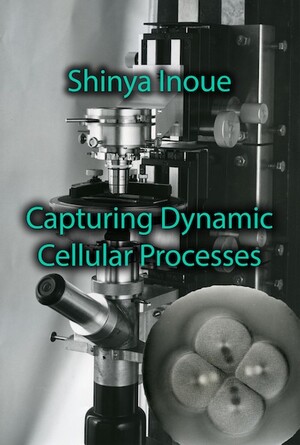A relatively new industry, the chemical industry, produced dyes which researchers could use to stain cells. Different chemicals stained different parts of the cell, and enabled researchers to identify key structures in cells. When researchers apply stains to cells, the stains change the optical properties of some parts of the cell, but not others. This creates a contrast between the stained parts and the rest of the objects in the cell, allowing them to be seen more clearly than if the stain had not been applied. Usually, to apply a stain to a cell means killing the cell. For most stains to work, scientists need to ‘fix’ the sample with a chemical such as formaldehyde or ethanol, which kills the cell.
Although stains have been used to identify structures such as chromosomes which we now know to be key parts of cells, staining could also produce ‘artefacts’. The application of the stain could give the impression that certain structures exist, when they are actually produced by the chemical activity of the stain, possibly in interaction with other chemicals in the cell, such as the fixatives. These artefacts meant that although the equipment, techniques, and materials available to microscopists at the start of the twentieth-century enabled them to view many parts of the cell, and to be able to reconstruct processes in the cell from series of samples, they could not be entirely sure that what they were viewing was actually there.
Even the development of photomicroscopy did not solve this problem. In 1895, the cell biologist Edmund Beecher Wilson (1856-1939) produced a book titled An Atlas of the Fertilization and Karyokinesis of the Ovum. This book combined beautiful photographs of the cell, together with Wilson’s interpretation of the figures. One of the most striking sets of photographs in the volume were those depicting the various stages of cell division. When the book was published, most biologists recognised the importance of the nucleus for the organism and its development. They knew that during cell division, the nucleus seemed to disappear, but then filaments, named chromosomes, appeared. Wilson’s photographs showed the movement of the chromosomes in the dividing cell.
Using the photographs, Wilson confirmed a suggestion by embryologist Edouard van Beneden (1846-1910) that as the chromosomes line up in the middle of the dividing cell, at each end or pole of the cell, structures called ‘amphiasters’ appeared, and from these extended ‘astral rays’ to the chromosomes. Wilson claimed that these astral rays then contracted like muscles, dragging half of the chromosomes to one end of the cell, and half to the other.
- Shinya Inoué, Pathways of a Cell Biologist. Through Yet Another Eye. Springer: 2016
- Shinya Inoué, Collected Works Of Shinya Inoué: Microscopes, Living Cells, and Dynamic Molecules (With DVD-ROM). World Scientific Publishing Company; Har/Dvdr edition (July 18, 2008).

